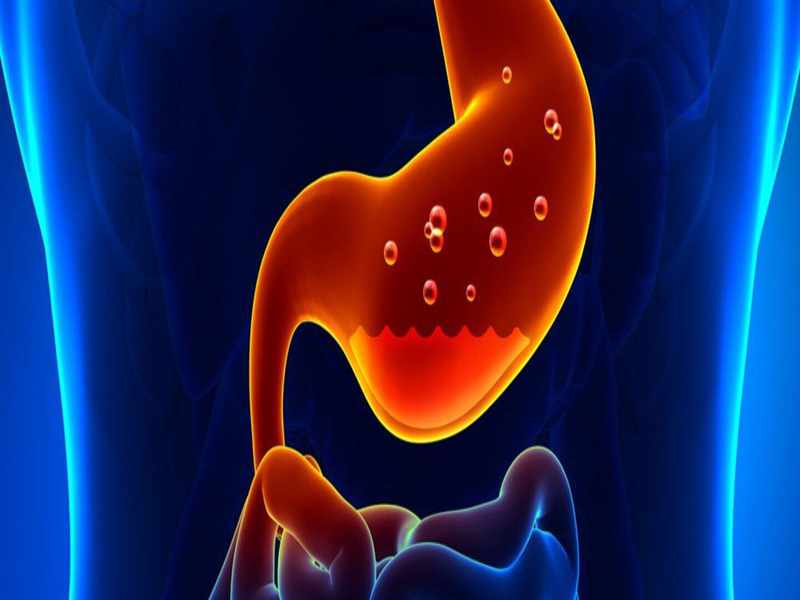In a significant portion of sliding type gastric hernias, there is no significant complaint. There is no need for treatment in these patients. In some patients, there are symptoms such regurgitation and burning in the middle part of the chest. These are complaints due to reflux. In paraesophageal hernias, gas and stomach contents are trapped in the herniated part of the stomach. Complaints such as fullness in the chest, feeling of mass, vomiting, undigested food coming into the mouth may occur. Depending on the degree of compression of the stomach, gastric bleeding or even perforation of the stomach is possible. Respiratory distress and recurrent pneumonia may also occur. Some of the patients may develop life-threatening complications such as severe bleeding, gastric rotation (volvulus) and necrosis that require urgent intervention.
Endoscopy is the first test in the diagnosis of hiatal hernias. Endoscopy can detect the degree and type of hernia and changes in the stomach and esophagus. It must be performed in patients with a suspected hiatal hernia. Barium radiographs are used less and less but may be useful in some patients. Contrast-enhanced computed tomography is useful in the diagnosis and is being used with increasing frequency.
If there are no significant complaints due to reflux in sliding type gastric hernias, surgery is not required. Paraesophageal (Type 2) gastric hernias require surgical treatment as complications such as bleeding, obstruction, necrosis and gastric perforation may occur.
Gastroesophageal Reflux Disease
At the junction of the esophagus and stomach, there is a zone of high pressure called the lower esophageal sphincter. This is the main factor limiting the escape of stomach contents into the esophagus. Gastroesophageal reflux occurs in everyone from time to time. However, 'Gastroesophageal Reflux Disease' develops in some patients when symptoms due to reflux are seen. Patients often experience regurgitation (stomach contents coming into the mouth) and burning sensation in the upper abdomen and mid-chest. Many patients report that regurgitation is more frequent when they bend over. In advanced disease, dysphagia may also be seen due to ulcer-related esophageal stenosis. In the presence of dysphagia, other causes should be investigated. In addition to these symptoms, cough, hoarseness and some other lung problems may occur due to excessive belching (stomach contents escaping into the lungs).
The most important diagnostic method is endoscopy. It allows the esophagus and stomach to be examined under direct vision. It shows lower sphincter insufficiency and the presence and degree of esophageal damage. Apart from endoscopy, manometry examining the motility of the esophagus and PH monitoring showing gastric acid regurgitation are necessary. Since hiatal hernias may also be associated with reflux, barium radiography and computed tomography can be performed to investigate the presence of hiatal hernia.
In treatment, drug therapy is primarily applied for acid secretion. A proton pump inhibitor is usually given for 6 weeks. In this way, the patient's response to the drug is also evaluated. Additional tests are required in patients who do not respond to medication.
Currently, surgical treatment is considered in cases of severe esophageal damage (ulcer, stenosis, Barrett's esophagus), inadequate improvement of symptoms and recurrence. In addition, surgical treatment is appropriate in young patients with long-term and refractory symptoms, and in patients who will require very long-term drug treatment.
In surgical treatment, an operation called fundoplication is applied. These operations are performed laparoscopically. Although there are many fundoplication methods, Nissen Fundoplication (360° wrapping of the upper part of the stomach around the esophagus) is most commonly used. Selection of the appropriate patient and surgical technique are critical for postoperative results.



